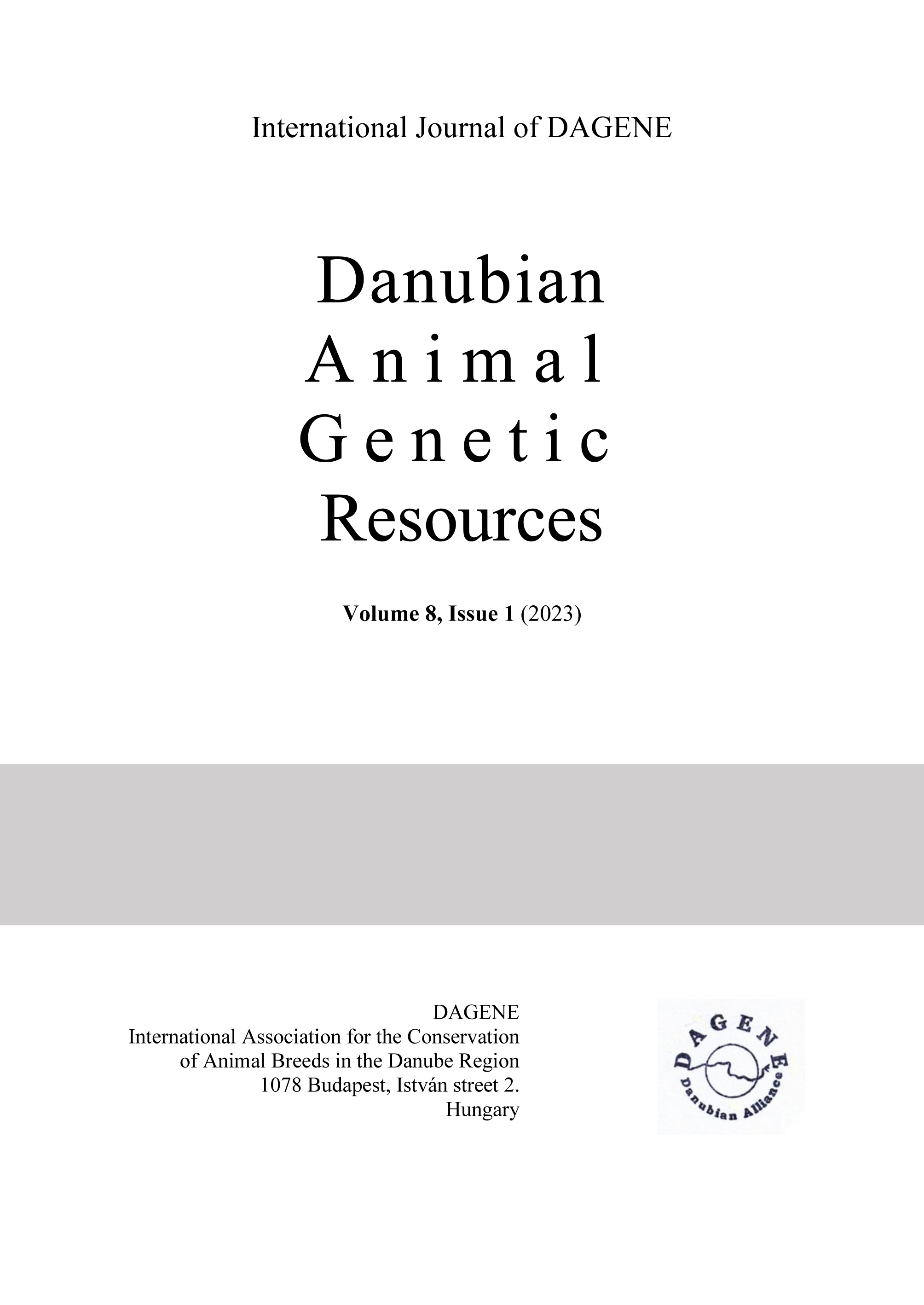Determination of the generation interval in the Gyimes Racka and its importance in endangered sheep breeds
Abstract
The idea of preserving endangered domestic animal breeds is not new. Despite this, many of these breeds have documented ancestry dating back only a few decades. The Hungarian stud book of the Gyimes Racka breed of sheep was established in 2005. The aim of the authors is to use the pedigree to determine the length of the generation interval in this breed and to compare it with the corresponding results from other breeds. The longest generational gap was found in mother-lamb relationships (4.13 and 4.63 years). This value for the ram-producing mothers was 4.00 years but interestingly the mothers producing female offspring lag behind contribute to reproduction, not much above (4.14 years, P>0.05). The shortest distance between successive generations was found between the breeding rams and their breeding and non-breeding progenies (3.28 and 3.69 years, respectively). In the relationship between the sires and their breeding sons, this value is even lower (3.14 years). On the father's side we get lower values because the rams are changed more often and remain in breeding for a shorter time. Mothers, on the other hand, stay in breeding one year longer (P<0.05). However, within the paths mentioned above, there was no longer any proven difference (P>0.05) depending on the sex of the lambs. Both lower and higher values than these can be found in the literature, depending mainly on how parent-offspring relationships have been defined. In the case of endangered domestic animals, it is advantageous if the generation interval is long, as here the annual mean decrease in genetic diversity is not significant.
References
ARKENBERG H. (2014): Berechnung und Auswertung von Zuchtparametern der Schafrasse Cigája und die besondere Bedeutung der weiblichen Schafe für die Zucht. Thesis. Department of Animal Breeding, Nutrition and Laboratory Animal Science, University of Veterinary Medicine Budapest.
DANCHIN-BURGE, C. – PALHIÉRE, I., – FRANCOIS, D. – BIBÉ, B. – LEROY, G. – VERRIER, E. (2010): Pedigree analysis of seven small French sheep populations and implications for the management of rare breeds. Journal of Animal Science, 88(2): 505-516. https://doi.org/10.2527/jas.2009-1961
DRĂGĂNESCU, C. – GROSU, H. (2010): Valachian (Zackel) Heritage Philetic Sheep Group - A Taxonomic Problem. Scientific Papers: Romanian Academy, International Association for the Conservation of Animal Breeds in the Danubian Region (DAGENE), Annual Meeting, Brazi
FÖLDI, D. – FÖLDI GY. – SÁFÁR L. (2017): Gyimesi racka. In SÁFÁR, L. (ed.) Régenhonos juh- és kecskefajtáink. HVG PRESS, 139-179.
GÁSPÁRDY, A. (2011): Horn conformation by the Zackels. Journal d’Ethnozootechnie de Roumanie, 1:1., 38-58.
GOYACHE, F. – GUTIÉRREZ, J.P. – GÓMEZ, E. – ÁLVAREZ, I. – DIEZ, I. – TOYO, L.J. (2003): Using pedigree information to monitor genetic variability of endangered populations: the Xalda sheep breed of Asturias as an example. Journal of Animal Breeding and Genetics, 2003, vol. 120(2): 95-105. https://doi.org/10.1046/j.1439-0388.2003.00378.x
GROENEVELD, E. – WESTHUIZEN, B.V.D. – MAIWASHE, A. – VOORDEWIND, F. – FERRAZ, J.B.S. (2009): POPREP: a generic report for population management. Genetics and Molecular Research, 8(3): 1158–1178. https://doi.org/10.4238/vol8-3gmr648
JOAKIMSEN, Ø. (1969): Generation Interval in Norwegian Sheep. Acta Agriculturae Scandinavica, 19(4):175-177. https://doi.org/10.1080/00015126909433183
KOPPÁNY, G. (2002): A gyimesi racka. In KÚTVÖLGYI, G. (ed.) Megőrzött ízek. Juhételek. Timp© Kft. Budapest.18-19.
LUSH, J. L. (1945): Animal Breeding Plans. Ames. Iowa State College Press. 443.
MCMANUS, C. – FACÓ, O. – SHIOTSUKI, L. – DE PAULA ROLO, J.L.J. – PERIPOLLI, V. (2019): Pedigree analysis of Brazilian Morada Nova hair sheep. Small Ruminant Research, 170: 37–42. https://doi.org/10.1016/j.smallrumres.2018.11.012
MOKHTARI, M. S. – MIRAEI-ASHTIANI, S. R. – JAFAROGHLI, M. – GUTIÉRREZ, J. P. (2015): Studying Genetic Diversity in Moghani Sheep Using Pedigree Analysis. Journal of Agricultural Science and Technology, 17(5):1151-1160.
ORAVCOVÁ, M. – KRUPA, E. (2011): Pedigree Analysis of The Former Valachian Sheep. Slovak Journal of Animal Science, 44(1): 6-12.
RAFTER, P. – MCHUGH, N. – PABIOU, T. – BERRY, D.P. (2022): Inbreeding trends and genetic diversity in purebred sheep populations. Animal, 16(8):100604 https://doi.org/10.1016/j.animal.2022.100604
TIBCO Software Inc. (2020): Data Science Workbench, version 14. http://tibco.com
VENKATARAMANAN, R. – SUBRAMANIAN, A. – SIVASELVAM, S.N. – SIVAKUMAR, T. – SREEKUMAR, C. – ANILKUMAR, R. – IYUE, M. (2013): Pedigree analysis of the Nilagiri sheep of South India. Animal Genetic Resources, 53:11–18. https://doi.org/10.1017/S2078633613000301



